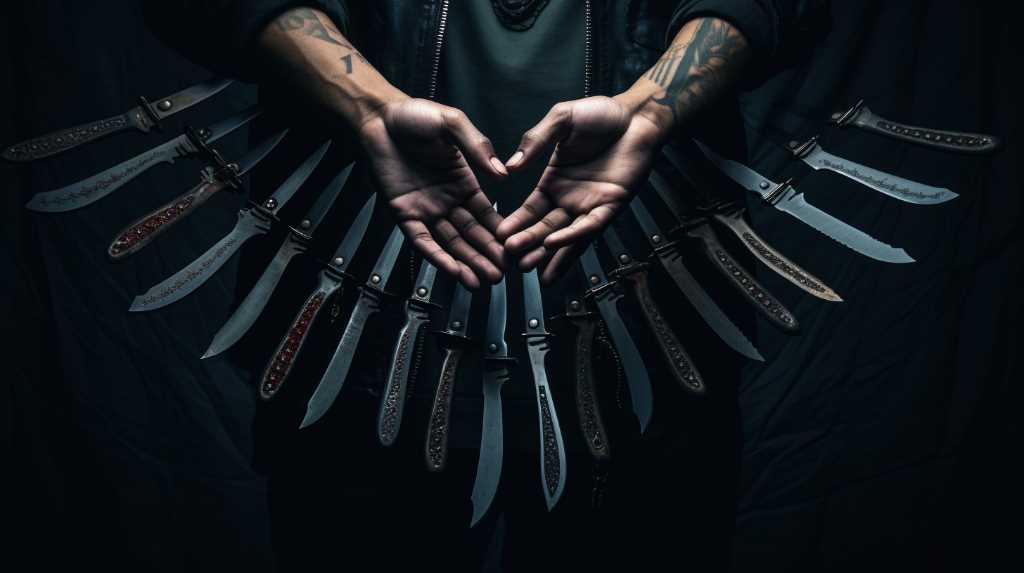
Selecting the perfect throwing knife is akin to finding a reliable companion on your journey towards precision and skill. Each factor to consider symbolizes a crucial aspect that ensures your success.
The weight and balance dictate your control and accuracy, while the length and design determine the knife's flight path.
Material and durability speak to its longevity, while your skill level and purpose govern the knife's suitability.
Finally, your budget and handle grip influence your comfort and overall performance.
Allow this article to liberate your understanding of selecting the ideal throwing knife.
Key Takeaways
- Weight and balance are important factors to consider when selecting a throwing knife.
- The length and design of the knife impact the distance, stability, and maneuverability of throws.
- Material and durability play a role in the longevity and performance of the knife.
- Skill level, purpose, and budget also influence the choice of throwing knife.
Weight and Balance
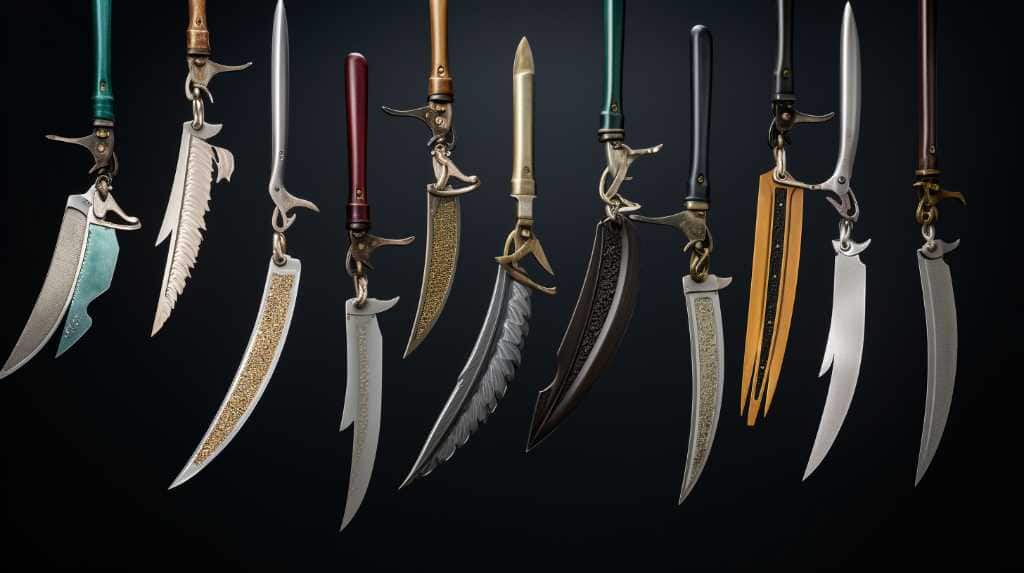
The weight and balance of a throwing knife are crucial factors to consider when selecting the most suitable weapon for accurate and efficient throwing techniques.
The weight of a throwing knife affects its flight path and the force with which it hits the target. A heavier knife will generally fly in a straighter line, while a lighter one may be more prone to deviation. However, it's important to find a balance that suits your throwing style and strength.
The balance of a throwing knife refers to its distribution of weight along its length. A well-balanced knife will rotate smoothly in the air, ensuring consistent accuracy. To achieve this, the weight should be evenly distributed between the blade and handle.
Length and Design
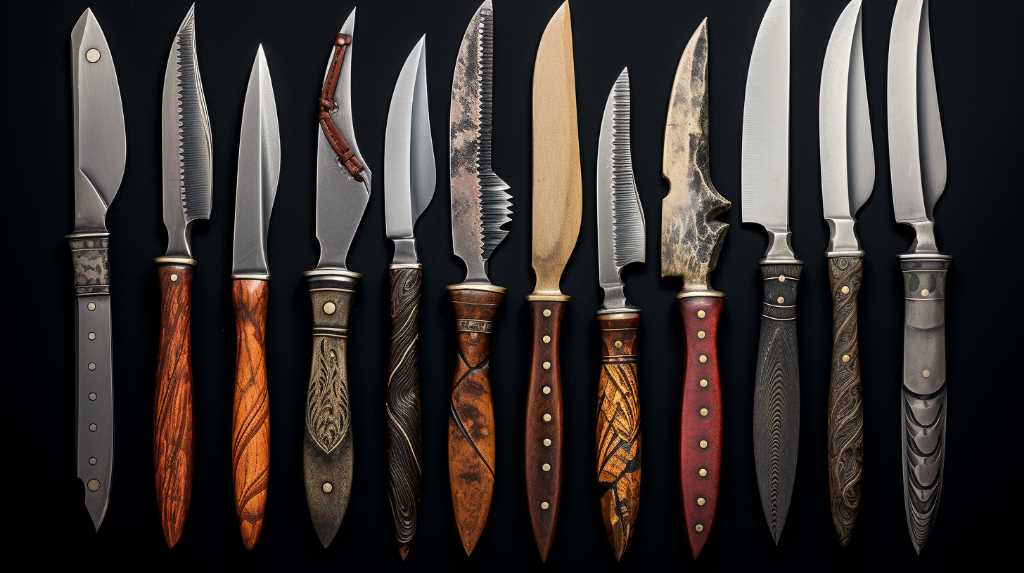
When selecting a throwing knife, it is important to consider the length and design to ensure optimal performance and accuracy in your throwing technique.
The length of the knife plays a crucial role in determining the distance and stability of your throws. Longer knives, typically between 9 to 12 inches, provide better stability and are more suitable for long-range throws. On the other hand, shorter knives, around 6 to 8 inches, offer improved maneuverability and are ideal for close-range throws.
Additionally, the design of the knife can greatly impact its aerodynamics and balance. Knives with a balanced weight distribution and a symmetrical design allow for better rotation and accuracy during the throw. It is also important to consider the handle design, as a comfortable grip ensures better control and reduces the risk of slippage.
Material and Durability
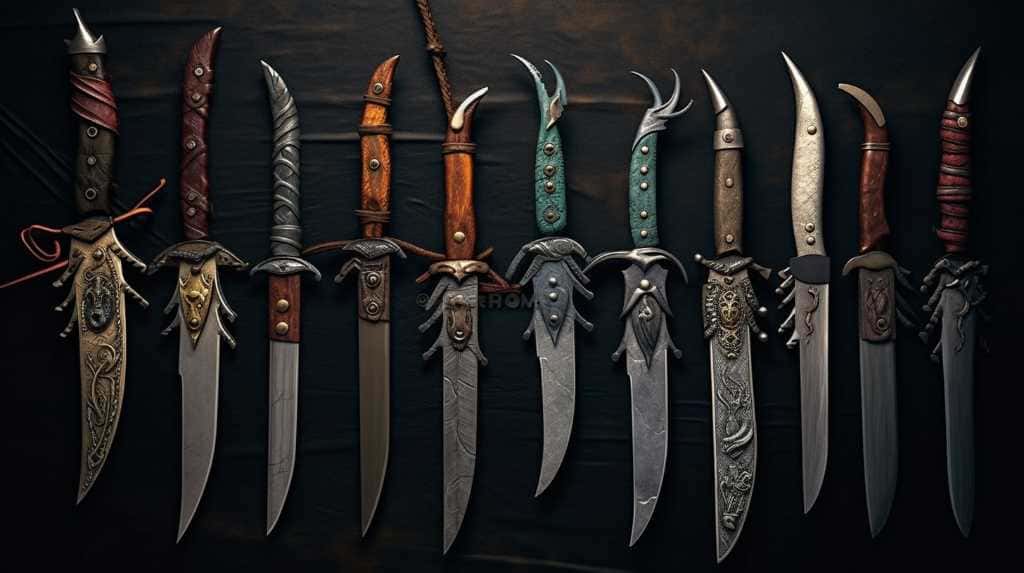
A key consideration in selecting a throwing knife is the material used and its durability, as it directly impacts the longevity and performance of the weapon.
When it comes to materials, stainless steel is a popular choice due to its resistance to rust and corrosion. High carbon steel, on the other hand, is known for its exceptional hardness and strength. Other materials like titanium and ceramic are also used, offering unique advantages such as lightweight construction and increased sharpness.
Durability is crucial, as throwing knives experience significant force upon impact. A well-constructed knife should be able to withstand repeated throwing without losing its structural integrity.
It is important to consider the intended purpose and frequency of use when selecting a throwing knife, as different materials and levels of durability may be required for various activities such as target practice or competitive throwing events.
Skill Level and Purpose
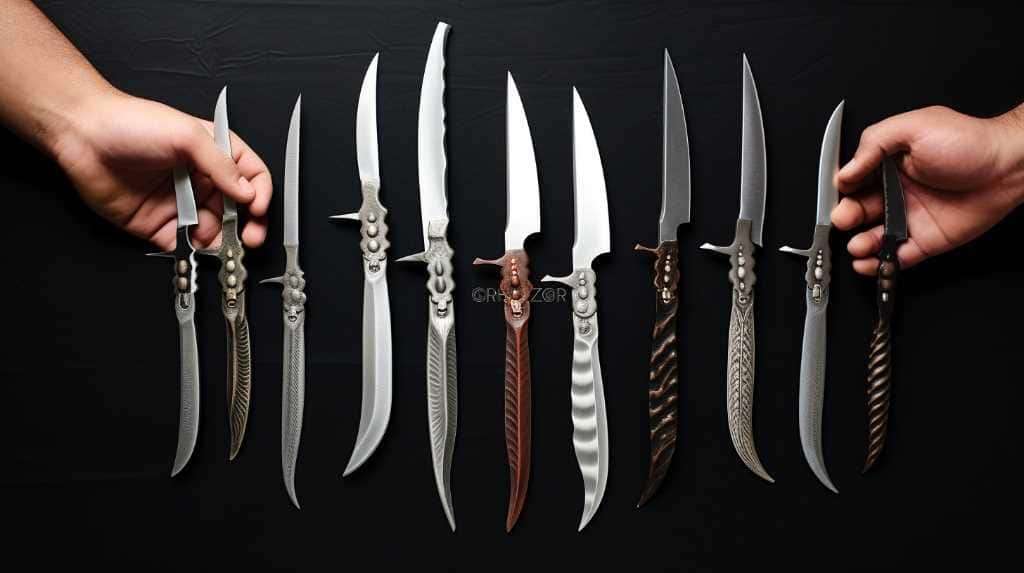
An important factor to consider in selecting a throwing knife is the skill level and purpose of the user, as it will determine the specific requirements and features needed for optimal performance.
For beginners or casual users, a lightweight knife with a balanced design is recommended. This allows for better control and accuracy during throws.
On the other hand, experienced throwers may prefer a heavier knife with a longer blade, as it provides more momentum and stability when thrown.
The purpose of the knife also plays a significant role. If the user intends to compete in throwing competitions, they may require a knife with specific weight and length regulations.
For self-defense purposes, a durable knife with a sharp point and edge is essential.
Considering the skill level and purpose ensures that the throwing knife meets the user's specific needs and enhances their overall throwing experience.
Budget and Handle Grip
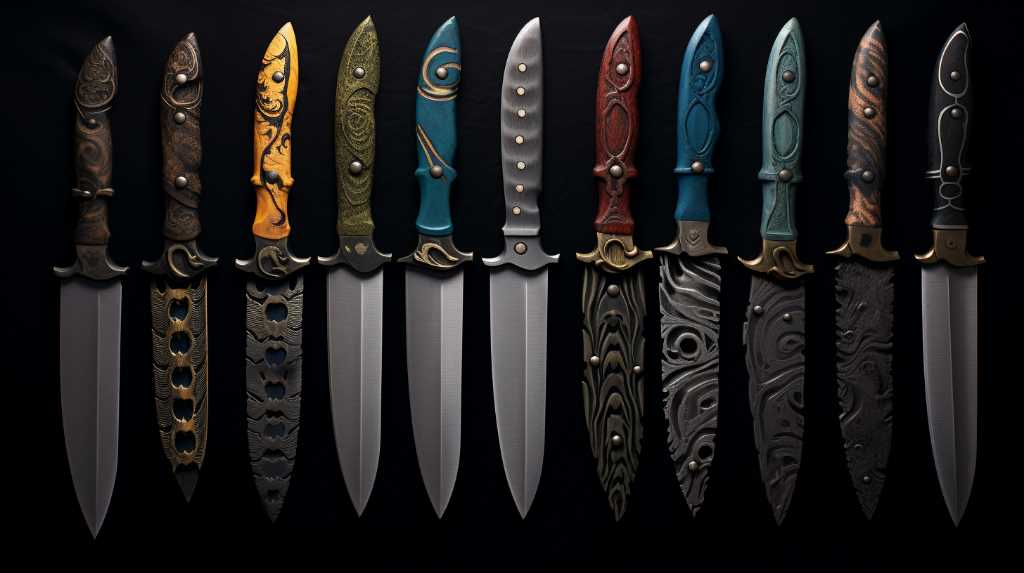
The quality of the handle grip is a vital consideration when assessing the suitability of a throwing knife within a specified budget. A throwing knife with a poor handle grip can be dangerous and ineffective. The handle grip should provide a secure and comfortable hold, allowing for proper control and accuracy during the throwing motion.
It should be made of a durable material that can withstand the impact of repeated throws. Additionally, the handle grip should have a texture or design that enhances grip and prevents slippage.
For those on a budget, it is important to find a throwing knife that strikes a balance between affordability and quality. Researching different brands and reading reviews can help identify options that offer a good handle grip at a reasonable price.
Frequently Asked Questions
Are Throwing Knives Legal to Own and Use in My Country or State?
When considering the factors for selecting a throwing knife, it is important to first determine the legality of owning and using such a weapon in your country or state. Compliance with the law should be a top priority.
What Are the Different Types of Throwing Knife Styles Available?
When selecting a throwing knife, it is important to consider factors such as the weight and balance of the knife, the material it is made of, the handle design, and the blade shape. These factors can greatly impact the knife's performance and your throwing accuracy.
Can Throwing Knives Be Used for Self-Defense?
Throwing knives can indeed be used for self-defense due to their versatility and precision. When selecting a throwing knife, factors such as weight, balance, and materials should be considered to ensure effectiveness and reliability in a self-defense situation.
Are There Any Specific Techniques or Training Required to Throw a Throwing Knife Accurately?
When selecting a throwing knife, it is important to consider factors such as weight, balance, blade shape, and handle design. These elements will determine the knife's accuracy, stability, and overall performance when throwing.
What Are Some Common Mistakes to Avoid When Using Throwing Knives?
When using throwing knives, it is important to avoid common mistakes that can compromise accuracy and safety. By understanding and addressing these errors, individuals can enhance their throwing skills and ensure a more successful and controlled throwing experience.
Conclusion
In conclusion, selecting a throwing knife involves considering various factors such as:
- Weight and balance
- Length and design
- Material and durability
- Skill level and purpose
- Budget
- Handle grip
Each of these factors plays a crucial role in determining the effectiveness and suitability of a throwing knife for an individual.
By carefully considering these factors, one can make an informed decision and choose a throwing knife that best meets their needs and preferences.

